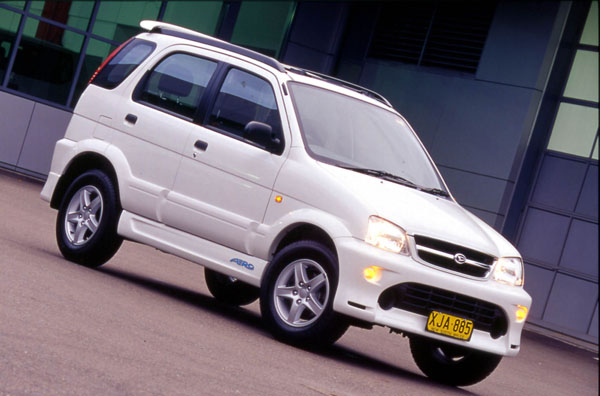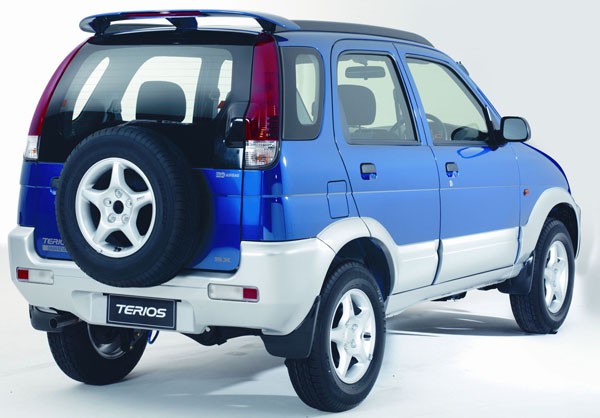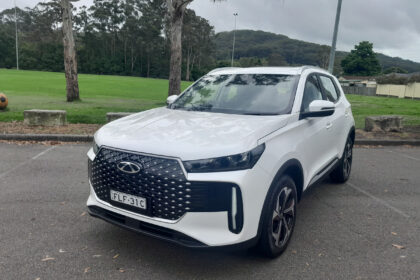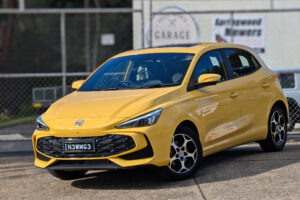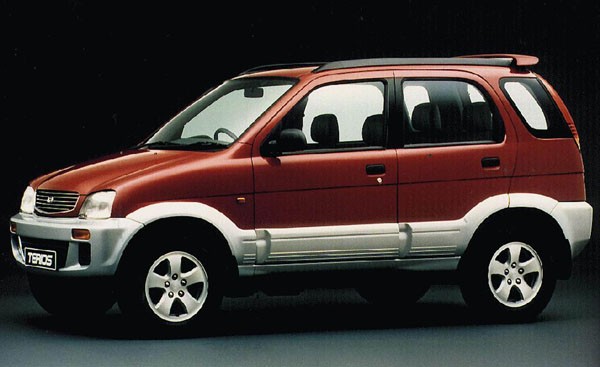
Daihatsu’s tiny Terios was never a huge seller in Australia, possibly because was considered too small for its tough-guy market segment, but did steady business from the time it went on sale here in 1997 until its withdrawal in 2005.
Daihatsu is one of the world leaders in small-vehicle design and has long had a reputation for making tough, genuine 4WDs. These little beasties have a fun shape that appeals to those who like to stand out from the crowd.
While not a ‘real’ 4WD in the true sense, Daihatsu Terios has good traction, sharp approach and departure angles, and its short wheelbase means it has excellent ramp-over. It will certainly take you places a two-wheel drive can’t go. It’s great fun at beaches and can also explore slippery dirt roads.
Terios is very narrow, principally to let it into a lower-tax bracket on its Japanese home market, so the rubbing of shoulders can be irritating, even in the front seats, if the occupants are on the wide side. Then again, if your beloved is right next to you it can be a most pleasant experience.
The narrow body and relatively high centre of gravity means the Terios can be on the tippy side if you drive it hard at corners. Under sensible driving it’s fine, but don’t push your luck.
Though it met the required safety regulations in its day, DaihatsuTerios sits high on the list of motor vehicles in which we would prefer not to have a crash.
Performance is better than you would expect from a four-cylinder 1.3-litre engine, with the light weight giving Terios decent acceleration. Hillclimbing with a bit of a load on board can be a hassle so if you’re going to be spending time in conditions like that make sure to find suitable roads for your initial road test.
Daihatsu Terios received a major upgrade in October 2000. The engine capacity remained at that diminutive 1.3-litre, but the new engine was a more modern unit than in the original models. Now featuring a twin-cam cylinder head it put out 120 kW in comparison to the 105 kW of the original. Performance is still nothing to get excited about. The engine is pretty busy at highway speeds, even in the later models, as this is really only intended to be an around-town conveyance.
Toyota controls Daihatsu worldwide and at one time in Australia. Due to slow sales the decision was made in 2005 to discontinue Daihatsu in this country. Some Toyota dealers may have bits in stock. Spare parts are starting to become a problem as the Terios ages. It’s smart to quiz aftermarket parts suppliers in your neighbourhood before deciding to buy one.
These are simple little cars to work on, with good underbonnet space in which the good amateur mechanic can reach most areas with relative ease.
Insurance costs are usually towards the bottom end of the scale.
WHAT TO LOOK FOR
The engine should start without hesitation, pull well even when it’s cold and have reasonable, though not great, performance at all times. Rough idling, especially on a hot day, is another sign of trouble.
Check the gearbox works properly, the clutch doesn’t slip and make sure there isn’t any slack in the driveshafts and universal joints. The latter are best tested as part of your off-road driving.
Be wary of a Terios which appears to have been taken into tough bush conditions. Look for underbody damage, bent bumper-bar corners, and scratches in the paint.
Inner-city motoring, which is how the Terios will spend most of its time, is also tough on a car’s body, with park-by-ear drivers knocking them around. Look the body over carefully, then call in an expert on crash repairs for the final opinion if there’s the slightest doubt on the body’s health.
During your test drive, preferably on dirt, or at least rough bitumen, listen for creaks or groans in the body. These could indicate it has been seriously stressed at times, probably by being driven hard in rough areas.
Examine the condition of the interior, especially for signs of sand usage and for muddy looking stains on the upholstery indicating the Terios has been seriously off-road.
CAR BUYING TIP
Off-Road vehicles that actually go off-road are rare. You’re probably better off concentrating on finding a used one that’s never been seriously bashed about on beaches or the bush.




